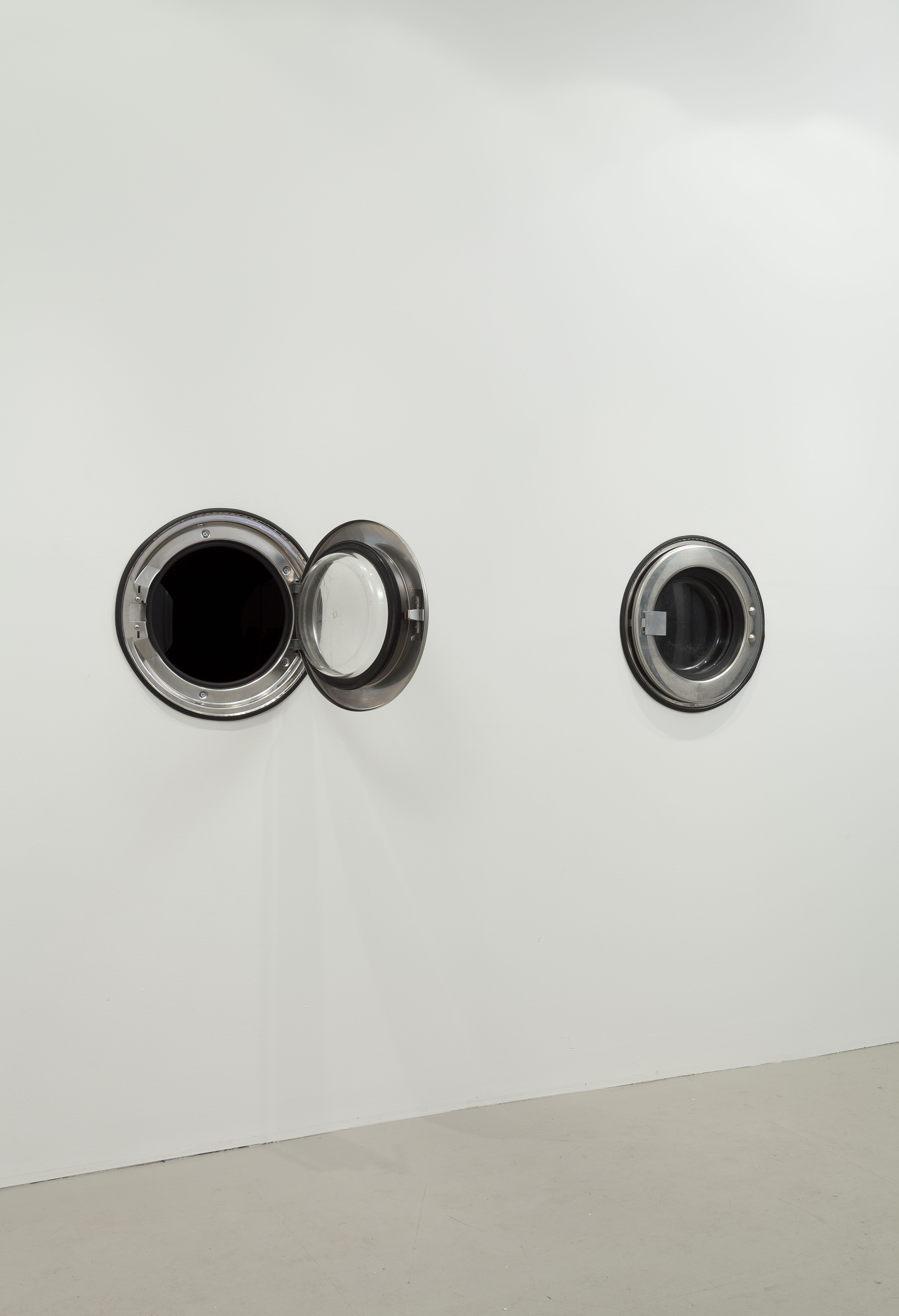There are 33,000 museums in the U.S., but only 3% of them hold a special designation: accreditation by the American Alliance of Museums. For a half-century, these elite museums have passed a rigorous test to earn the AAM seal of approval. Those institutions – which now number 1,099 – include several Northeast Ohio.
Jon Fiume, Akron Museum of Art director and CEO, explains the basics of accreditation.
“There are a variety of topics that we have to report on, including leadership, strategic planning, collection stewardship, educational programs, finances and the overall perception of the institution in the community and the overall culture of the institution,” Fiume says.
Accreditation is a significant accomplishment that requires a lengthy process of self-analysis and peer review, according to Katherine Solender, interim
director of the Allen Memorial Art Museum at
Oberlin College.
“The AAM recognizes a museum for demonstrating excellence and operating in accordance with the best practices in the field in terms of operational effectiveness, curatorial rigor, collections stewardship, educational impact and community engagement,” Solender says. “It is the way museums demonstrate collectively, as a profession, that they are self-regulating and truly accountable to the public.”
Just being accepted into the accreditation program doesn’t guarantee a successful outcome. That’s when the real work begins, according to Kelly Falcone-Hall, president and CEO of the Western Reserve Historical Society in Cleveland’s University Circle neighborhood.
“It’s an 18- to 24-month process that involves a comprehensive self-study,” Falcone-Hall says. “You get a visit with peer reviewers, and then you’re
evaluated by a 12-member commission.”
Falcone-Hall understands the AAM accreditation process well because she is also a peer reviewer. She cautioned that even the re-accreditation process isn’t a slam dunk.
“One of my assignments is to evaluate a museum seeking re-accreditation,” she says. “They still had to do a pretty exhaustive self-study. I go with another peer reviewer for a three-day site visit. Then our report and the self-study and our findings go to the accreditation commission.”
The accreditation process benefits a museum, even if it doesn’t attain the right to display the AAM weave design logo, which symbolizes excellence.
“We said from the beginning, if we never get accredited, we’re going to be a better organization because we have taken these steps to improve all of these areas of our operation,” Falcone-Hall says. “Even a small museum with limited resources can take the AAM Pledge of Excellence.”
Guide To Some Northeast Ohio Accredited Museums
Akron Art Museum
1 S. High St.
Akron, OH 44308
akronartmuseum.org

Akron Art Museum is a modern and contemporary art facility. It opened in 1922 as the Akron Art Institute. The museum covers 20,000 square feet of gallery space holding works produced since 1850. It evolved from its origins as a volunteer organization to emphasize fine art and design following World War II. In 1980, the museum’s name change signaled a new beginning and move to a renovated historic downtown structure. The 1899 former old post office remains the museum home today. Some favorite works in the museum’s collection include Roy Lichtenstein’s “Modern Room” lithograph and Cindy Sherman’s “Untitled #93” Ektacolor print. Akron Art Museum credits one benefit of AAM accreditation as its ability to borrow significant pieces of artwork from other institutions.
Allen Memorial Art Museum At Oberlin College

At Oberlin College
87 N. Main St.
Oberlin, OH 44074
Allen Memorial Art Museum has been an integral part of Oberlin College for more than 100 years. The museum is often admired for the quality, breadth and depth of its collection, formed largely by a commitment to interdisciplinary teaching. The museum engages Oberlin College and the community by valuing critical inquiry, creativity, knowledge of the past and the material history of human achievement. Allen Memorial Art Museum was re-accredited in 2023. The AAM accreditation is also reflective of Oberlin College, the museum’s parent organization. According to Allen Memorial leadership, the museum’s exhibitions, programming, and teaching enhances the Oberlin education experience and creates value for the communities the college serves.
The museum noted five “must see” works:
- The Afro-Portuguese Saltcellar by the Foliage Master
- Altar in a Carrying Case (Christ on the Mount of Olives) by Jacopo Ligozzi
- Saint Sebastian Tended by Irene by Hendrick Ter Brugghen
- View of Venice: Ducal Palace, Dogana, and Part of San Giorgio by Joseph Mallord Wil-liam Turner
- Self-Portrait as a Soldier by Ernst Ludwig Kirchner
Cleveland Museum of Natural History

1 Wade Oval Drive
Cleveland, OH 44106
cmnh.org
The Cleveland Museum of Natural History is a century-old institution that explores evolution that originated in a two-room downtown building. The 375,000-square-foot exhibit space still houses specimens from its first collection, which was known as the Ark. Last December, the museum officially reopened after a $150 million renovation. The striking architectural design of the museum is warm and welcoming. Inside, the exhibits and reimagined exhibits are designed to teach visitors something new every time they walk through the space. The goal of the museum is to teach science and make it fun. Some of the groundbreaking exhibits include a digital aquarium wall and an earthquake simulator. Another popular feature is the Nathan and Fannye Shafran Planetarium and the Ralph Mueller Observatory. The popular Pink Floyd-inspired multi-media presentation, “The Dark Side of the Moon,” returned to the planetarium in late May and runs through Aug. 31. A regional focus is also evident throughout the museum. The Ames Family Curiosity Center focuses on specimens representing the Great Lakes region and northern Ohio.
To read more about the $150 million transformation, visit
shorturl.at/e94UD.
Cleveland Museum of Art
Main Museum
11150 East Blvd.
Cleveland, OH 44106
clevelandart.org

Community Arts Center
2937 W. 25th St.,
Cleveland, OH 44113
Transformer Station
1460 W. 29th S.
Cleveland, OH 44113
The Cleveland Museum of Art includes 63,000 pieces of artwork. Major collections provide a wide range of works representing African art, American painting and sculpture, Chinese art, contemporary art, Egyptian and ancient Near Eastern art, European painting, Greek and Roman art, Japanese art, Korean art and medieval art. The museum is considered one of the nation’s top art museums. It opened in 1916 and gained an international reputation for excellence shortly thereafter. The museum doubled in size when an addition was constructed in 1958. Another wing was added in 1971, which contained special exhibition galleries, classrooms and the Gartner Auditorium. In 2012, the museum was re-accredited by the AAM. The Takashi Murakami exhibit features works from a Japanese artist known for his unique style that examines the cultural energies of contemporary Japan—anime, manga, and the otaku culture that grew around these popular art forms – against the backdrop of Japanese traditions. Takashi Murakami uses his art to interpret historical events and their lasting effects, such as the end of World War II, the 2011 Tōhoku earthquake and tsunami and the COVID-19 pandemic. The exhibit is on display through Sept. 7.
Holden Forests & Gardens

Cleveland Botanical Garden
11030 East Blvd.
Cleveland, OH 44106
holdenfg.org
Holden Arboretum
9550 Sperry Road
Kirtland, OH 44094
Holden Forests & Gardens is the 12th-largest public garden in the U.S.
The Cleveland Botanical Garden primary feature is the 17,000-square-foot Eleanor Armstrong Smith Glasshouse. It replicates a Madagascar desert and butterfly-filled Costa Rican rainforest. The glasshouse includes unusual plants like the “upside down” baobabs, with branches that look like tree roots. There are 350 exotic plants and 50 different butterflies, birds, reptiles and amphibians within the glasshouse habitats. The Cleveland campus also includes eight individual gardens, each featuring a specific type of plant life.
The Holden Arboretum is a sprawling 3,600 acres of natural property with gardens, trails, and lakes. It features the Kalberer Emergent Tower and Murch Canopy Walk. The Holden Arboretum covers 3,500 acres, including 200 acres of gardens and collections. They include the Arlene and Arthur S. Holden Jr. Butterfly Garden, the four-season Display Garden, the Eliot and Linda Paine Rhodo-dendron Discovery Garden, the Helen S. Layer Rhododendron Garden, the Myrtle S. Holden Wildflower Garden, and the Henry Norweb Jr. Tree Allée (a walkway bordered by trees). The arboretum is also home to a 15,000-square-foot greenhouse and research facility that conducts a nationally recognized study of plant sciences and the environment.
Kent State University Museum

515 Hilltop Drive
Kent, OH 44242-0001
kent.edu/museum
Kent State University is ranked among the top 25 fashion schools in the world and was named the best fashion school by Vogue Magazine. Kent State University Museum also emphasizes fashion and design. It is dedicated to the collecting, exhibiting, interpreting and preservation of fashion and decorative arts. The museum’s eight galleries feature works by some of the world’s top designers. The museum opened in 1985 with 4,000 costumers and accessories and 1,000 pieces of decorative art. It is considered one of the most comprehensive collections of fashion-able design from the 18th century to current day. Currently, the museum is featuring “The Hepburn Style: Katharine and her designers.” The exhibit follows costume designers who dressed Hepburn, the Hollywood fashion icon. The exhibit runs through Sept. 28.
Western Reserve Historical Society

Cleveland History Center
10825 East Blvd.
Cleveland, OH 44106
wrhs.org
The Western Reserve Historical Society is the steward for American and Northeast Ohio history. The society is an affiliate of the Smithsonian Institution. Its mission is to inspire people to discover the American experience by exploring the history of Ohio. The institution has 39 historic structures that have been donated to Western Reserve Historical Society over the last 150 years. Seven of those structures are listed on the National Register of Historic Places. A popular experience is riding the restored Euclid Beach Park Grand Carousel. The Western Reserve Historical Society encompasses 250 acres, and a restoration and storage facility in Macedonia. It is one of the largest regional historical societies in the U.S. Properties include:



The Crawford Auto-Aviation Museum with 170 antique automobiles and 12 aircraft
Hale Farm & Village, a living history museum that explores 19th-century life through 32 historic structures and gardens
Loghurst in Canfield, a vintage farmhouse
Holsey Gates House in Bedford, a Queen Anne-style house built in 1893
Shandy Hall, a 17-room home built in 1815
Cranz Farm, an 18th-century six-building farm in Peninsula
The library, a collection of 5 million items, including 250,000 books, 25,000 newspapers and 340,000 images








